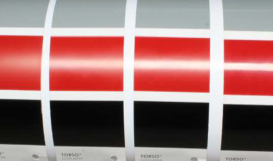
We have developed a system to measure both the optical properties of facial skin and the three-dimensional shape of the face. To measure the three-dimensional facial shape, our system uses a light-field camera to provide a focused image and a depth image simultaneously. The light source uses a projector that produces a high-frequency binary illumination pattern to separate the subsurface scattering and surface reflections from the facial skin. Using a dichromatic reflection model, the surface reflection image of the skin can be separated further into a specular reflection component and a diffuse reflection component. Verification using physically controlled objects showed that the separation of the optical properties by the system correlated with the subsurface scattering, specular reflection, or diffuse reflection characteristics of each object. The method presented here opens new possibilities in cosmetology and skin pharmacology for measurement of the skin's gloss and absorption kinetics and the pharmacodynamics of various external agents.

Interaction between the diffuse colour and the gloss of its surface is common. In this work, the influence of different gloss levels is tested on the diffuse colour. Firstly, we investigated how the albedo colour correlates with the reflected specular part. Furthermore, we provided a visual experiment. The visual experiment is conducted in two parts. The results of the visual experiment show that changing the angle of illumination does not affect the final gloss perception. Furthermore, a fitting of the gloss perception is done to find a parameter that correlates with the visual perception of gloss. The results show that there is a quadratic correlation between the Canon scattering indexes and the perceptual gloss.